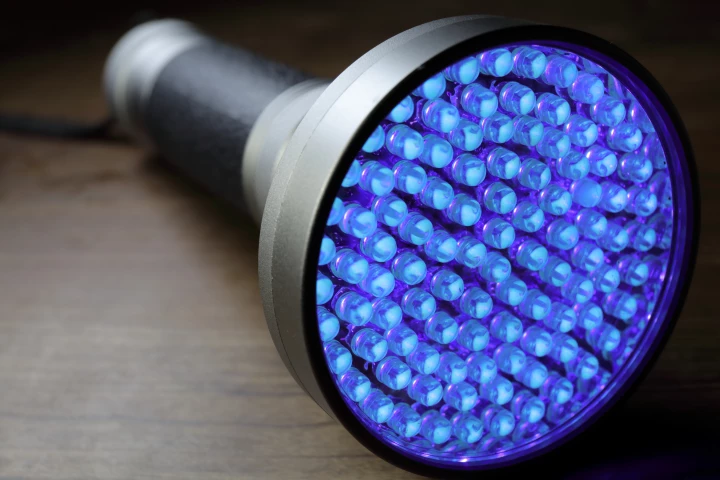Ultraviolet
-
Imagine if you were a product designer who wanted to see what an actual physical object would look like in different colors or patterns. Well, MIT has designed a system that allows users to easily do just that, utilizing photochromic dyes.
-
An ancient tree fossil has offered scientists a peek into a moment 42,000 years ago when the Earth’s magnetic field went haywire. The study paints a picture of environmental chaos, influencing everything from an increase in cave paintings to the extinction of the Neanderthals.
-
Unlike us, many animals can see ultraviolet light. If you're using a video screen to study their visual perception, therefore, that screen really ought to work in the UV spectrum – and a new one does just that.
-
Astronomers have precisely measured the distance to the oldest and farthest known galaxy. Light left GN-z11 around 13.4 billion years ago, when the universe was a cosmic toddler, meaning this galaxy marks the very edge of the observable universe.
-
Researchers at Lancaster University have developed a new material that can store energy for months, and potentially years, at a time. The material can be activated by light, and then release the pent-up energy on demand in the form of heat.
-
A simple home test for breast cancer and a UV energy-harvesting window made of recycled materials are the big winners of this year’s James Dyson Awards. The annual competition encourages university students to develop innovative solutions to problems.
-
Atmospheric phenomena known as "sprites" and "elves" may be illuminating the cloud layers of Jupiter, according to a newly published study. These short-lived light displays have been spotted on Earth manifesting above intense lightening storms.
-
As tiny particles traveling at the speed of light, it’s going to take a serious machine to capture photons in action, and an international team of researchers have just pieced together one that is very much up for the job.
-
Even though we're warned about the harmful effects of ultraviolet (UV) rays in sunlight, they're essential for the production of vitamin D in the body. Now, scientists are claiming that UV LEDs could serve as a safe alternative to sunlight.
-
It’s human nature to be transfixed by clouds, and Jupiter offers some of the best cloud-watching in the solar system. Now, new Hubble images remind us why, revealing fresh storms brewing along with some intriguing changes to old ones.
-
When suturing wounds within the body, there's a risk of damaging the tissue, and of the development of infections. A new surgical glue could reduce the need for sutures, though, plus it could close wounds faster while also delivering medication.
-
A NASA spacecraft has observed a pulsing glow coming from Mars. Huge spots of ultraviolet light were seen in the night sky, pulsing with uncanny regularity – exactly three times every night. The find highlights the Red Planet's atmospheric processes.
Load More











